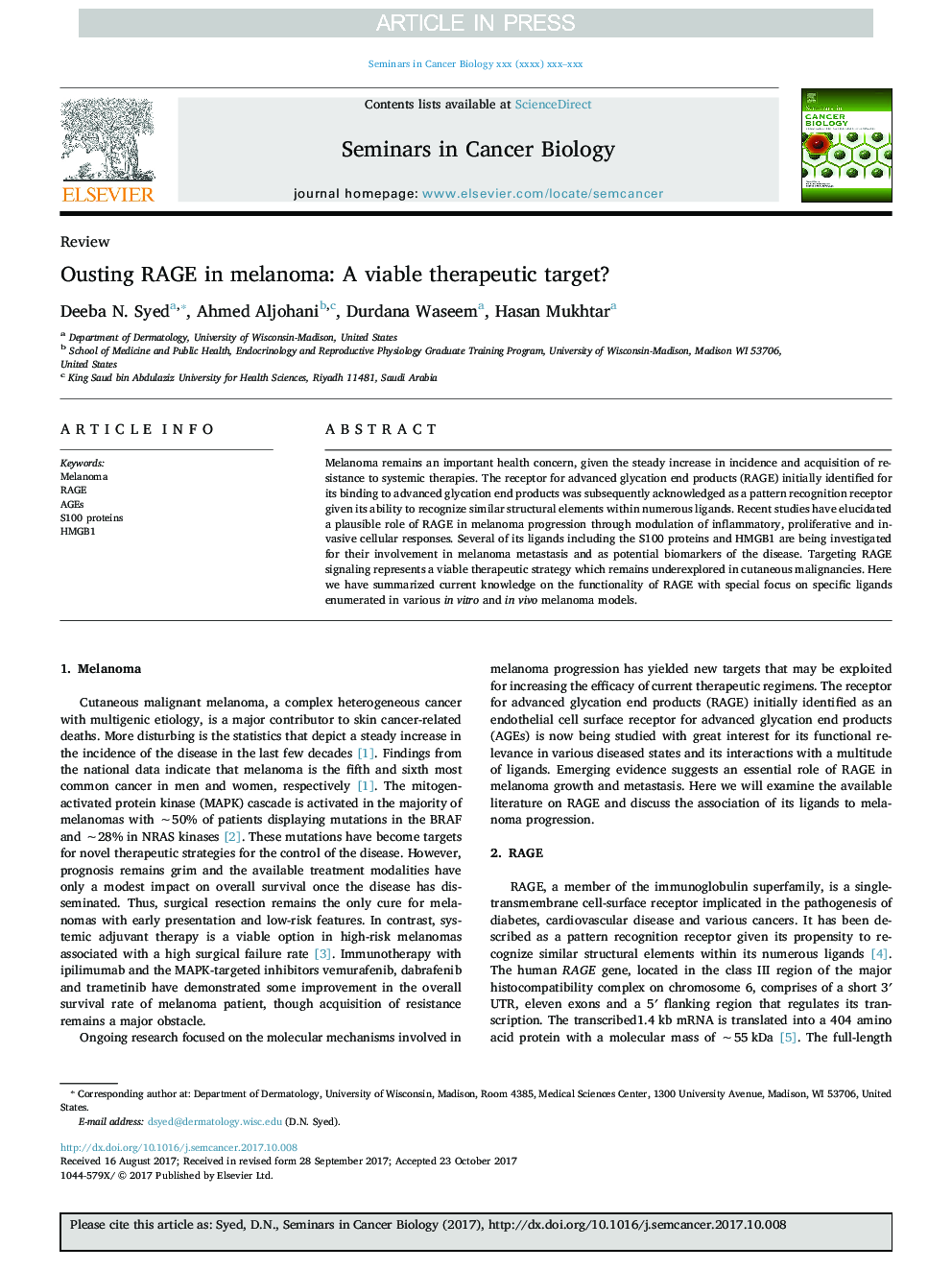| Article ID | Journal | Published Year | Pages | File Type |
|---|---|---|---|---|
| 8361764 | Seminars in Cancer Biology | 2018 | 9 Pages |
Abstract
Melanoma remains an important health concern, given the steady increase in incidence and acquisition of resistance to systemic therapies. The receptor for advanced glycation end products (RAGE) initially identified for its binding to advanced glycation end products was subsequently acknowledged as a pattern recognition receptor given its ability to recognize similar structural elements within numerous ligands. Recent studies have elucidated a plausible role of RAGE in melanoma progression through modulation of inflammatory, proliferative and invasive cellular responses. Several of its ligands including the S100 proteins and HMGB1 are being investigated for their involvement in melanoma metastasis and as potential biomarkers of the disease. Targeting RAGE signaling represents a viable therapeutic strategy which remains underexplored in cutaneous malignancies. Here we have summarized current knowledge on the functionality of RAGE with special focus on specific ligands enumerated in various in vitro and in vivo melanoma models.
Keywords
Related Topics
Life Sciences
Biochemistry, Genetics and Molecular Biology
Biochemistry
Authors
Deeba N. Syed, Ahmed Aljohani, Durdana Waseem, Hasan Mukhtar,
